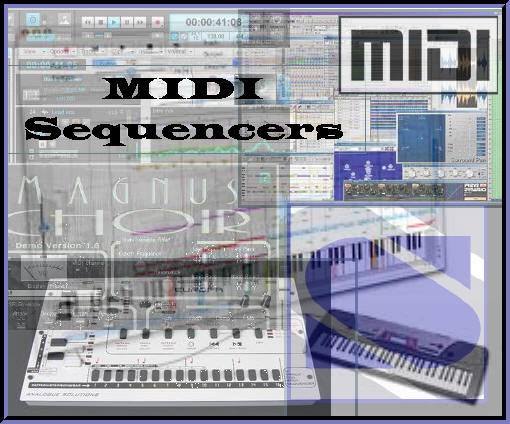MIDI Sequencers


Sequencers
One of the most important devices in MIDI production is the
MIDI sequencer. A sequencer is a digitally based device or a
computer program that is used to record, edit, and output
performance-related MIDI data in a sequential fashion. The
recorded MIDI-related channel and system messages commonly
represent real-time or non-real-time performance events such
as note on/off, velocity, modulation, aftertouch, and
continuous controller messages. After a performance has been
“recorded” into a sequencer’s or a computer’s internal memory,
the data can be edited and saved to hard or floppy disk. When
the sequence is played back, the device outputs these MIDI
messages to the various connected MIDI devices within the
system to re-create the performance. Unlike a recorded
performance in which the instrument’s sounds are produced
under the direct control of a live player, a sequencer
communicates real-time performance data to various electronic
instruments, which in turn produce the performed sound.
Most sequencers have a design similarity to their distant
cousin, the multitrack tape recorder, in that MIDI data can be
recorded onto separate “tracks” that contain isolated, yet
related, performance material that is synchronous in time.
Each of these tracks can be assigned to any MIDI channel and
may contain any number of performance-and control-related
messages (within the memory constraints of the device). When
played back, the instruments and devices in the system that
are assigned to a specific MIDI channel (0-16) respond only to
track (or tracks) transmitting on that particular channel.
The number of individual tracks offered varies widely from one
manufacturer and model type to the next and ranges from 8 to
over 500 tracks. Almost every system is capable of
transmitting and receiving data over all 16 MIDI channels,
although most professional sequencers can communicate data
over two or more independent MIDI data lines, which enables
them to address 32 or more separate MIDI channels.
Another important feature offered by most sequencers is the
capability to edit MIDI data in the digital domain. Standard
cut-and-paste editing techniques generally are offered, which
enable segments of sequenced data to be cut, copied, or
reinserted at any point in a track or to any other track.
Complex algorithms for performing such tasks as velocity
changes, modulation and pitch bend, transposition, and
humanizing (the controlled randomization of performance data
to approximate human timing errors that are generally present
in a live performance), as well as control over program or
continuous controller messages, can also be inserted and
changed.
About MIDI
Making Music with MIDI
MIDI Controllers
MIDI Products
MIDI Glossary
MIDI Sequencers
Connecting a MIDI Keyboard to a Computer


